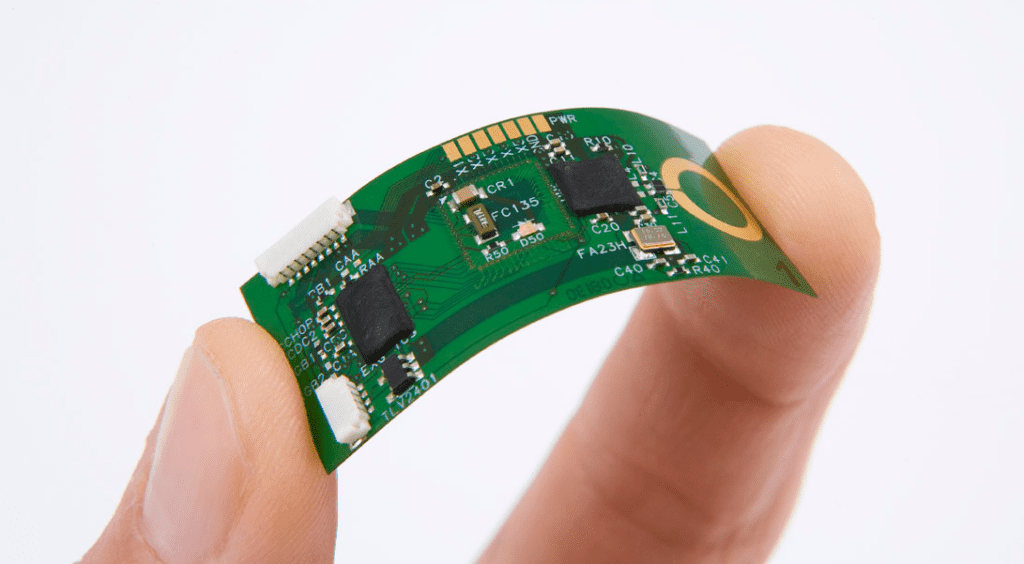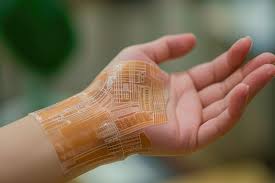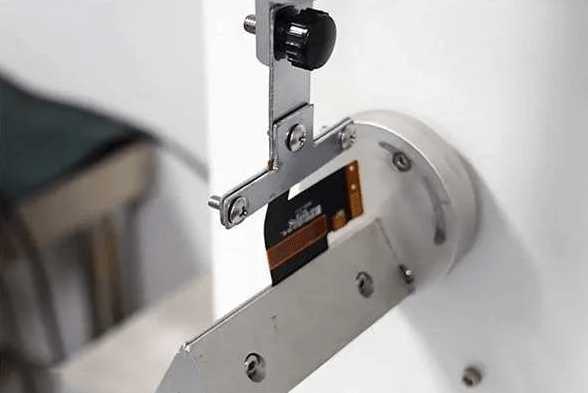In the fast-growing world of medical wearables, flexible printed circuit boards (PCBs) are at the heart of innovation. These devices, such as fitness trackers, glucose monitors, and heart rate sensors, demand designs that balance high performance with biocompatibility for safe skin contact. At ALLPCB, we understand the unique challenges of creating biocompatible flex PCB materials and reliable designs for medical applications. This blog dives deep into flex PCB design for skin contact, medical wearable flex PCB reliability, low-power flex PCB for medical devices, and sustainable materials for medical flex PCBs, offering actionable insights for engineers and designers.
Why Flexible PCBs Are Critical for Medical Wearables
Medical wearables have transformed healthcare by enabling real-time monitoring and personalized treatment. Flexible PCBs are the backbone of these devices due to their ability to bend, twist, and conform to the human body. Unlike rigid PCBs, flex PCBs can fit into compact, lightweight designs, making them ideal for skin-worn or implantable devices. Their adaptability ensures comfort for users while maintaining functionality in dynamic environments.
However, designing flex PCBs for medical wearables isn’t just about flexibility. These boards must meet strict standards for biocompatibility to prevent skin irritation or allergic reactions. They also need to deliver reliable performance under stress and consume minimal power to extend battery life. Let’s explore how to achieve this balance.

Key Considerations in Flex PCB Design for Skin Contact
When designing a flex PCB for skin contact, safety and comfort are non-negotiable. The materials and construction must prevent adverse reactions while ensuring the device functions as intended. Here are the critical factors to consider in flex PCB design for skin contact:
1. Material Selection for Biocompatibility
The choice of materials is the foundation of a safe and effective medical wearable. Biocompatible flex PCB materials must resist corrosion from sweat or bodily fluids and avoid triggering skin irritation. Common materials include:
- Polyimide (PI): A popular substrate for flex PCBs due to its flexibility, thermal stability, and biocompatibility. It can withstand temperatures up to 260°C, making it suitable for sterilization processes.
- Silicone-Based Coatings: Often used as a protective layer, silicone is skin-safe and provides a soft, flexible surface that minimizes discomfort.
- Gold or Nickel-Free Finishes: Surface finishes like ENIG (Electroless Nickel Immersion Gold) are sometimes modified to exclude nickel, a common allergen, ensuring safer skin contact.
These materials must comply with standards like ISO 10993, which evaluates biocompatibility for medical devices. Testing for cytotoxicity, sensitization, and irritation is essential before production.
2. Design for Comfort and Fit
A wearable device must conform to the body’s contours without causing pressure points or chafing. Flex PCBs should have a thin profile, typically between 0.1mm and 0.3mm, to remain unobtrusive. Designers can use dynamic bending zones with curved traces to distribute stress evenly and prevent cracking during movement. For instance, a smart patch for continuous glucose monitoring might use a flex PCB with a bending radius of 5mm to wrap around the arm comfortably.

Ensuring Medical Wearable Flex PCB Reliability
Reliability is a cornerstone of medical wearables. A failure in a heart rate monitor or insulin pump could have serious consequences. Achieving medical wearable flex PCB reliability requires addressing environmental, mechanical, and electrical challenges.
1. Environmental Durability
Medical wearables are exposed to moisture, temperature fluctuations, and physical stress. Flex PCBs must resist degradation from sweat (which can have a pH as low as 4.5) and endure temperature ranges from 0°C to 40°C for outdoor use. Using moisture-resistant adhesives and conformal coatings can protect circuits from corrosion. For example, parylene coatings provide a thin, uniform barrier with excellent moisture resistance, extending the lifespan of the PCB.
2. Mechanical Stress Testing
Flex PCBs in wearables undergo repeated bending and stretching. A typical fitness tracker might experience 10,000 bending cycles over its lifetime. Designers must use materials with high tensile strength and test prototypes under simulated conditions. Standards like IPC-6013 for flexible circuits outline testing protocols for bend cycles and durability to ensure the PCB withstands real-world use.
3. Electrical Performance Under Stress
Reliable signal transmission is critical for medical data accuracy. Flex PCBs should maintain low impedance, often below 50 ohms for high-speed signals, even when bent. Copper traces with a thickness of 1 oz (35 μm) are commonly used for their balance of conductivity and flexibility. Additionally, minimizing trace width to 0.1mm can reduce signal loss in compact designs.

Designing Low-Power Flex PCBs for Medical Devices
Power efficiency is a major concern in medical wearables, where battery life directly impacts usability. A device like a heart rate monitor might need to operate for 7-14 days on a single charge. Creating a low-power flex PCB for medical devices involves optimizing both hardware and design.
1. Component Selection for Energy Efficiency
Choose microcontrollers and sensors with low power consumption, such as those operating in sleep modes below 1μA. For instance, a Bluetooth Low Energy (BLE) module can transmit data at a current draw of under 10mA, preserving battery life. Integrating power management ICs directly onto the flex PCB can further reduce energy waste by regulating voltage efficiently.
2. Circuit Layout for Minimal Power Loss
Shorten trace lengths to reduce resistance and power loss. A typical trace resistance of 0.5 mΩ per inch can add up in longer designs, so compact layouts are essential. Additionally, using wider traces for power lines (e.g., 0.5mm) minimizes voltage drops, ensuring stable operation at low power levels.
3. Energy Harvesting Integration
Some medical wearables can incorporate energy harvesting to extend battery life. Flexible piezoelectric materials or thermoelectric generators can convert body heat or motion into small amounts of power, often generating 10-100μW. While not enough to fully power a device, this can supplement battery usage for ultra-low-power sensors.
Suggested Reading: Flexible PCB Design: Best Practices for Bendable Circuit Applications
Exploring Sustainable Materials for Medical Flex PCBs
Sustainability is becoming a priority in electronics manufacturing, even for medical applications. Using sustainable materials for medical flex PCBs not only reduces environmental impact but also aligns with regulations like RoHS (Restriction of Hazardous Substances). Here’s how to incorporate eco-friendly practices without compromising performance or biocompatibility.
1. Biodegradable and Recyclable Substrates
Traditional polyimide substrates are durable but not biodegradable. Emerging alternatives, such as bio-based polymers derived from cellulose or polylactic acid (PLA), offer flexibility and decompose naturally over time. While these materials are still under development for high-performance applications, they show promise for disposable medical patches. For non-disposable devices, recyclable copper and adhesive layers can reduce waste during manufacturing.
2. Lead-Free and Non-Toxic Finishes
Lead-free soldering and non-toxic surface finishes like immersion silver or organic solderability preservatives (OSP) are safer for both users and the environment. These finishes maintain conductivity (with resistivity often below 1.7 μΩ·cm for copper layers) while meeting biocompatibility standards.
3. Reducing Material Waste in Design
Optimize the PCB layout to minimize material usage. Nested designs, where multiple PCBs are arranged on a single panel, can reduce substrate waste by up to 20%. Additionally, using thinner copper layers (e.g., 0.5 oz instead of 1 oz) when high current isn’t required can lower material costs and environmental footprint.
Suggested Reading: Bio-Based Flexible PCBs: A New Frontier in Sustainable Electronics
Challenges and Solutions in Flex PCB Design for Medical Wearables
Designing flex PCBs for medical wearables comes with unique challenges. Addressing these issues early ensures a successful product launch.
1. Regulatory Compliance
Medical devices must meet standards like FDA regulations in the U.S. or ISO 13485 for quality management. Flex PCBs must pass biocompatibility tests (ISO 10993) and demonstrate reliability through documented testing. Partnering with a manufacturer experienced in medical-grade PCB production can streamline certification.
2. Balancing Cost and Performance
High-performance materials like polyimide or specialized coatings increase costs. To manage budgets, use hybrid designs combining rigid and flex sections, reserving expensive materials for dynamic areas. This can reduce material costs by 15-30% while maintaining reliability.
3. Miniaturization Without Sacrificing Function
As wearables shrink, so must their PCBs. Multi-layer flex designs with via-in-pad technology can save space, allowing components to be stacked vertically. However, ensure trace spacing (e.g., 0.1mm minimum) prevents crosstalk, especially for high-frequency signals above 1 GHz.
How ALLPCB Supports Medical Wearable Development
At ALLPCB, we’re committed to helping engineers bring medical wearables to life. Our expertise in flex PCB manufacturing ensures high-quality, biocompatible designs tailored to your needs. We offer:
- Custom material selection for biocompatibility and performance.
- Advanced testing for reliability under mechanical and environmental stress.
- Support for low-power designs with optimized layouts.
- Eco-friendly manufacturing processes to meet sustainability goals.
Our team understands the strict requirements of medical applications and works closely with clients to navigate regulatory challenges and achieve cost-effective solutions.
Conclusion: Innovating with Flex PCBs in Medical Wearables
Flexible PCB design for medical wearables is a delicate balance of performance, biocompatibility, and sustainability. By focusing on biocompatible flex PCB materials, ensuring medical wearable flex PCB reliability, optimizing for low-power flex PCB for medical devices, and embracing sustainable materials for medical flex PCBs, engineers can create devices that improve lives. Whether you’re designing for skin contact or tackling complex regulatory hurdles, a well-thought-out flex PCB design for skin contact is key to success.
At ALLPCB, we’re here to support every step of your journey, from prototype to production. Let’s innovate together and shape the future of medical wearables with cutting-edge flex PCB solutions.
 ALLPCB
ALLPCB







